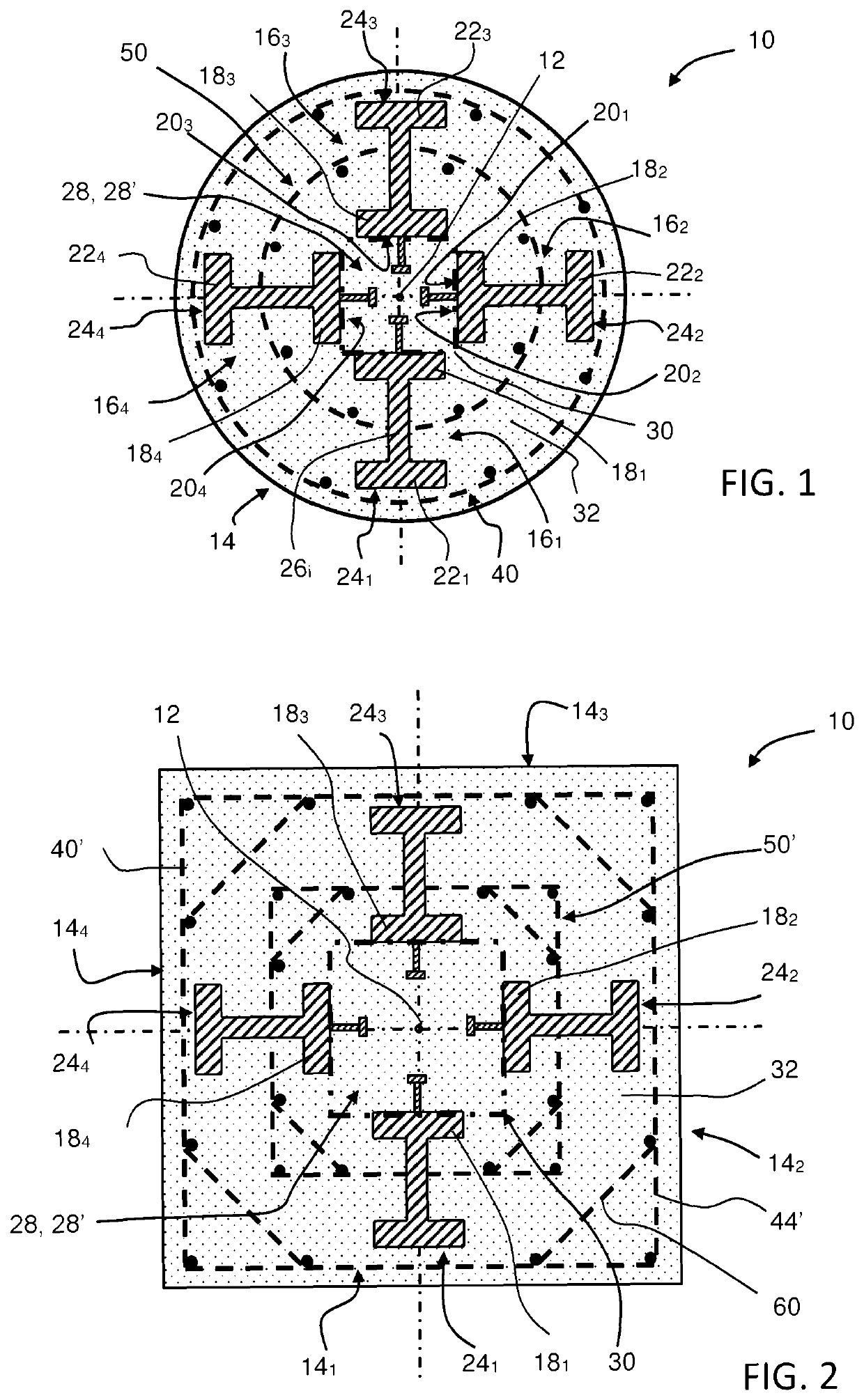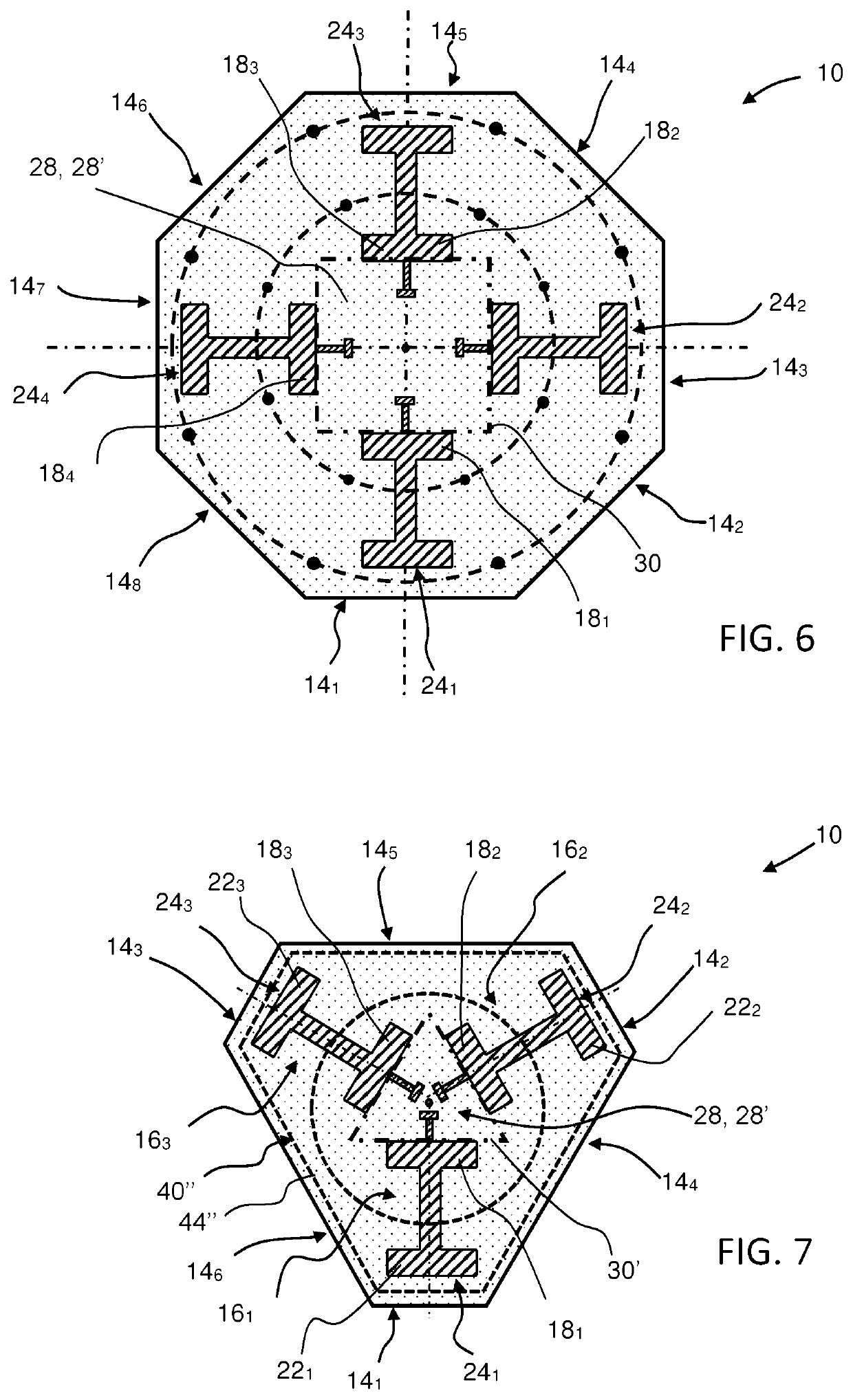Steel reinforced concrete column
a technology of reinforced concrete and steel, applied in the direction of building reinforcements, constructions, building components, etc., can solve the problems of general efficiency, and achieve the effect of improving notably the quality of the column and being easy to build
- Summary
- Abstract
- Description
- Claims
- Application Information
AI Technical Summary
Benefits of technology
Problems solved by technology
Method used
Image
Examples
Embodiment Construction
[0052]It will be understood that the following description and drawings describe embodiments of the invention by way of example and for illustration purposes. They shall not limit the scope, nature or spirit of the claimed subject matter. In the drawings, equivalent elements in different embodiments bear the same reference numbers.
[0053]FIG. 1 schematically shows a cross-section of a first embodiment of a steel reinforced concrete column 10 in accordance with the invention (also designated in a shortened form as “the column 10”). The column 10 comprises a longitudinal central axis 12 and a shell surface (or outer envelope) 14. The longitudinal central axis 12 is perpendicular to the drawing plane. In the column of FIG. 1, the shell surface 14 is a right circular cylindrical surface having the longitudinal central axis 12 as cylinder axis. It follows that the column of FIG. 1 has a circular cross-section.
[0054]Four hot-rolled steel sections 161, 162, 163, 164 with an H-shaped section...
PUM
 Login to View More
Login to View More Abstract
Description
Claims
Application Information
 Login to View More
Login to View More - R&D
- Intellectual Property
- Life Sciences
- Materials
- Tech Scout
- Unparalleled Data Quality
- Higher Quality Content
- 60% Fewer Hallucinations
Browse by: Latest US Patents, China's latest patents, Technical Efficacy Thesaurus, Application Domain, Technology Topic, Popular Technical Reports.
© 2025 PatSnap. All rights reserved.Legal|Privacy policy|Modern Slavery Act Transparency Statement|Sitemap|About US| Contact US: help@patsnap.com



